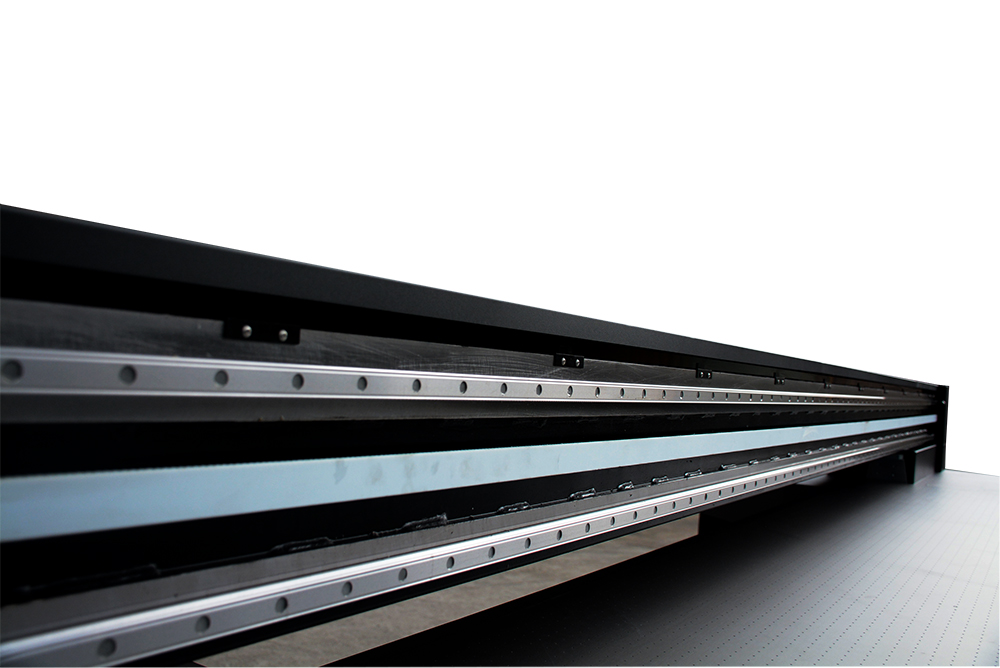Technical Insights: How Does a UV Flatbed Printer Work?
In the realm of digital printing, UV flatbed printers have emerged as a game-changer, revolutionizing the way we approach printing on a myriad of surfaces. From rigid materials like glass, metal, and ceramic tiles to flexible substrates such as vinyl and fabric, these printers offer unparalleled versatility and precision. But what lies beneath the hood of a UV flatbed printer? How does it manage to produce such high-quality, durable prints on such a diverse range of materials? In this article, we delve into the technical intricacies of UV flatbed printers, exploring their working principles, key components, and the processes that enable them to deliver exceptional print quality.

The Basics of UV Flatbed Printing
UV flatbed printing is a form of inkjet printing where ultraviolet (UV) light is used to cure or dry the ink almost instantly after it is deposited onto the substrate. This technology allows for precise control over the ink’s deposition and curing, resulting in sharp images, vibrant colors, and excellent durability. Unlike traditional solvent-based or aqueous inks that require time to dry, UV-curable inks solidify upon exposure to UV light, enabling faster production times and reducing the risk of smudging or bleeding.
Key Components of a UV Flatbed Printer
A UV flatbed printer comprises several essential components that work in harmony to produce high-quality prints. These include:
Ink Delivery System: This system consists of ink cartridges or tanks filled with UV-curable inks. The inks are typically pigment-based, formulated to provide superior color fastness and resistance to fading, water, and abrasion. The ink delivery system ensures precise and consistent ink flow to the print heads.
Print Heads: The print heads are the heart of the printer, responsible for ejecting tiny droplets of ink onto the substrate. They utilize piezoelectric or thermal technology to control the ejection of ink, allowing for highly detailed and accurate prints. Advanced printers may feature multiple print heads to increase printing speed and efficiency.
UV Curing Lamps: These lamps emit ultraviolet light that triggers the curing process of the UV-curable inks. As the ink droplets land on the substrate, they are immediately exposed to UV light, causing them to polymerize or solidify almost instantly. This rapid curing process enables the printer to handle a wide range of materials and produces prints that are ready for immediate use or further processing.
Substrate Handling System: This system ensures that the substrate is securely held in place during printing and curing. It may include vacuum tables, clamps, or other mechanisms to accommodate different types and sizes of materials. The substrate handling system also facilitates easy loading and unloading of materials, enhancing the printer’s usability and productivity.
Control System: The control system manages all aspects of the printing process, from ink delivery and print head movement to UV lamp activation and substrate handling. It typically includes a sophisticated software interface that allows operators to adjust printing parameters, monitor the printer’s status, and troubleshoot any issues that may arise.
The Printing Process
Now that we have an overview of the key components, let’s take a closer look at the printing process in a UV flatbed printer:
Preparation: Before printing begins, the substrate is carefully prepared and loaded onto the printer. This may involve cleaning the surface, applying a primer if necessary, and securing the material to the printer’s substrate handling system.
Image Processing: The digital image to be printed is processed by the printer’s control system. This involves converting the image into a format that the printer can understand and optimizing it for the best possible print quality.
Ink Deposition: The print heads move across the substrate, ejecting tiny droplets of UV-curable ink in a precise pattern dictated by the digital image. The ink droplets land on the surface and begin to spread out, but they are quickly cured before they can渗透 or bleed.
UV Curing: As soon as the ink droplets are deposited, they are exposed to UV light from the curing lamps. The UV light triggers a chemical reaction in the ink, causing it to polymerize and solidify almost instantly. This rapid curing process ensures that the ink adheres firmly to the substrate and produces a durable, smudge-resistant print.
Repeat and Finish: The process is repeated for each layer of ink required to achieve the desired color and density. Once the printing is complete, the substrate is unloaded from the printer and may undergo additional processing, such as cutting, trimming, or laminating, depending on the application.
Advantages of UV Flatbed Printing
UV flatbed printing offers several advantages over traditional printing methods, including:
Versatility: The ability to print on a wide range of materials, from rigid to flexible substrates, makes UV flatbed printers highly versatile.
Durability: UV-curable inks produce prints that are resistant to fading, water, and abrasion, ensuring long-lasting results.
Precision: The precise control over ink deposition and curing allows for highly detailed and accurate prints.
Speed: The rapid curing process enables faster production times, increasing efficiency and productivity.
Environmental Benefits: UV-curable inks are often more environmentally friendly than solvent-based inks, as they do not emit volatile organic compounds (VOCs) during the curing process.
Conclusion
In conclusion, UV flatbed printers are a remarkable example of how advancements in technology have transformed the printing industry. By combining precise ink deposition, rapid UV curing, and versatile substrate handling, these printers are capable of producing high-quality, durable prints on a wide range of materials. Whether you’re looking to print on glass, metal, ceramic tiles, or flexible substrates like vinyl and fabric, a UV flatbed printer can provide the versatility, precision, and durability you need to bring your creative visions to life. As technology continues to evolve, we can expect UV flatbed printers to become even more sophisticated and capable, further expanding their applications and pushing the boundaries of what’s possible in digital printing.
